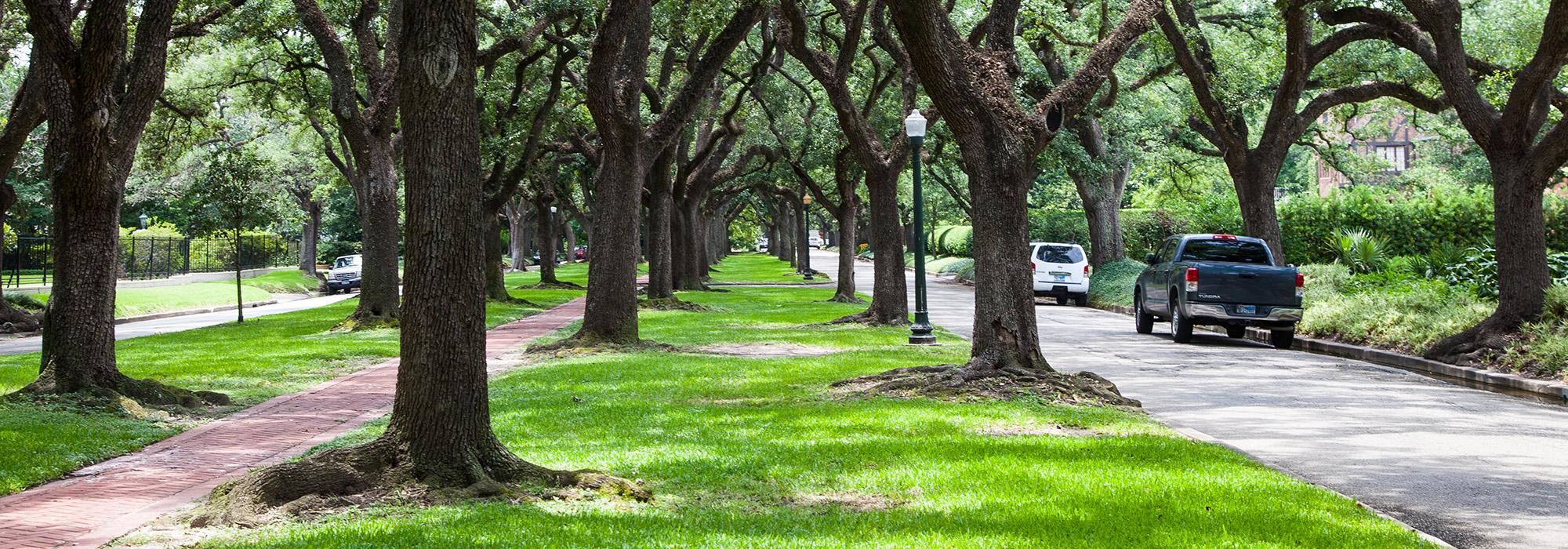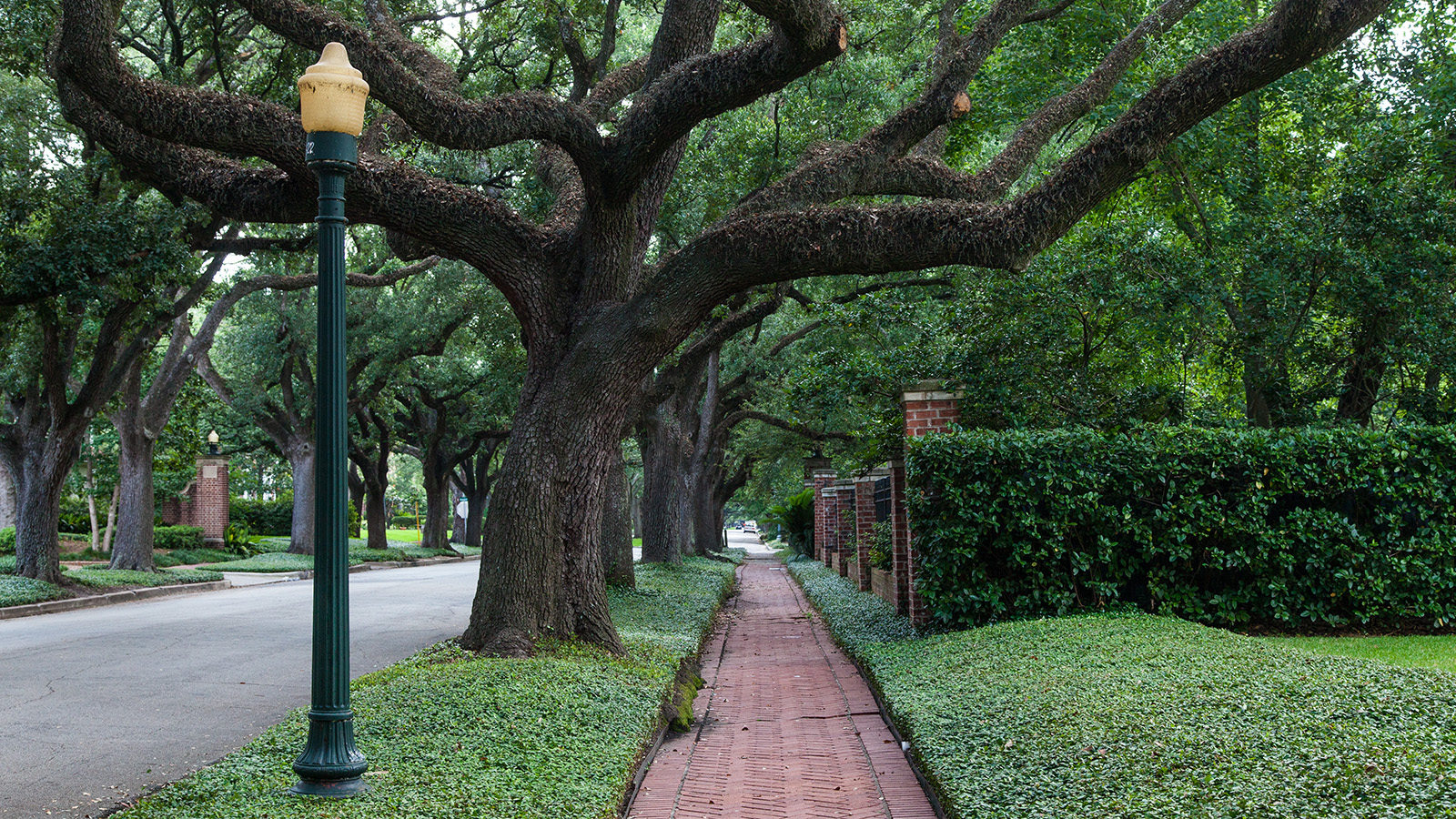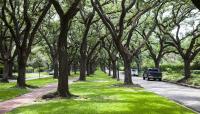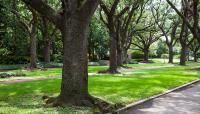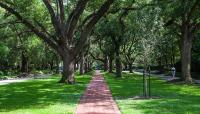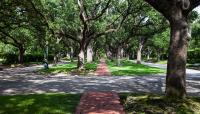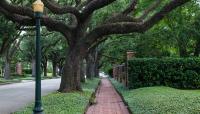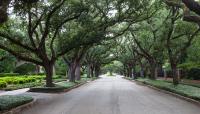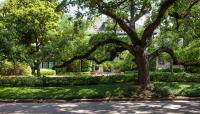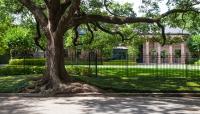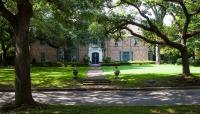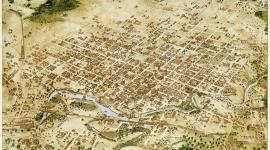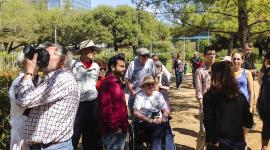Landscape Information
Lying just north of Rice University in Houston’s South End, this neighborhood comprises 25 large lots for single-family houses, a park, and harmonious boulevards lined with live oak. Land for the 34-acre residential development was purchased in 1908 by Captain James Baker. Between 1923 and 1930, eighteen houses were constructed, variously designed by architects William Ward Watkin, John Staub, and Birdsall Briscoe. Another seven houses were built between the end of the Great Depression and the early 1950s.
Watkin also designed entry pillars for the neighborhood and provided its overall design and plan: Along its eastern edge, he laid out a 2.5-acre trapezoidal park with groves of trees, open lawns, and a tennis court. Houses were organized around a U-shaped network of three boulevards. Developed with Bonner Means Baker (James Baker, Jr.’s, wife), Watkin’s design for the boulevards comprised two one-way roads separated by wide, grassy medians with brick walks extending along their central axes. The boulevards and medians were lined with a staggered arrangement of live oak that formed a dramatic, rhythmic sequence at street level and an interlaced canopy overhead. Lot sizes ranged from four-fifths of an acre to two acres, houses were set 60 feet from the boulevards, and utilities were buried. Most houses were fronted by large lawns; landscape architects Ellen Shipman, C.C. “Pat” Fleming, and J. Allen Myers, Jr., each designed residential gardens in the neighborhood in the 1920s and 1930s. Retaining a high degree of its historic character, the Broadacres Historic District was listed in the National Register of Historic Places in 1980.



